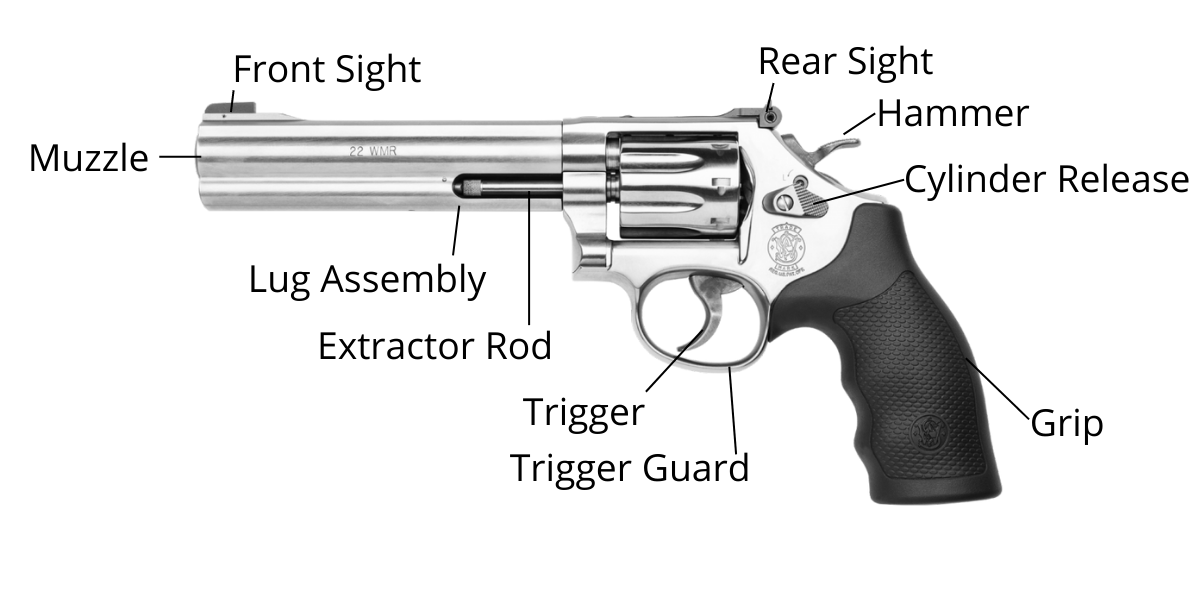The Basic Anatomy Of A Revolver
Curious about a revolver?
In this instructional video produced by Smith & Wesson, we are taken through the basic anatomy of a revolver by Jerry Miculek.
Muzzle - The very front of the gun, where the bullet comes out, is the muzzle. This is the area that can bite, so pay attention to where your muzzle is pointed at all times. Never aim the barrel towards an object that you wouldn't be ready to destroy, not even your feet.
Front Sight & Rear Sight - The front sight is located atop the muzzle, and a deep trough leads back to the rear sight. To determine where you will send your bullet, you need to glance down the top of the pistol and align the front and back sights.
Lug Assembly - Protects the extractor rod from getting bent
Extractor Rod - After shooting, the spent cartridges can be emptied by pushing back on the ejector rod, which extends out the front of the cylinder.
Trigger - The trigger is the comma-shaped appendage below the cylinder. The action that shoots the gun is started when you pull the trigger.
Trigger Guard - The trigger guard, which protects against unintentional discharge, surrounds the trigger. Till you're prepared to fire, keep your finger off the trigger.
Hammer - The hammer is located at the gun's top back end. This might be concealed inside the mechanism of a double action only firearm because pulling the trigger will move the hammer for you. The exterior hammer is eliminated, resulting in a cleaner line that won't catch on clothing.
Before firing a single action revolver, you must cock the hammer by pulling it back. When you want to shoot, you can either squeeze the trigger quickly or cock the hammer for a smoother trigger pull.
The firing pin is struck by the hammer, which then triggers the primer, causing the powder charge in the cartridge to explode and firing the cannon. The primer functions similarly to a firecracker's fuse.
Cylinder Release - The cylinder release is directly behind the cylinder. When operating the Ruger LCR, you push the cylinder out of the frame using your right thumb and the index finger or fingers of your left hand.
When you're ready to reload, you may swing the cylinder out thanks to the cylinder release, which maintains it snapped into place while you shoot. You press, push, or pull the gun depending on the model to fire it.
Grip - Smith and Wesson's have a round butt style frame size and it will accept any round butt series of stocks
View the full video here:

